Everyday Life as an Artist
This post is about my current everyday life.
I was going to tell you that my life has been very ordinary lately: I wake up in the morning, take the dogs for a walk and start painting. In the evening, I practice my ideas with the ProCreate app or knit and let my subconscious work on art-making.
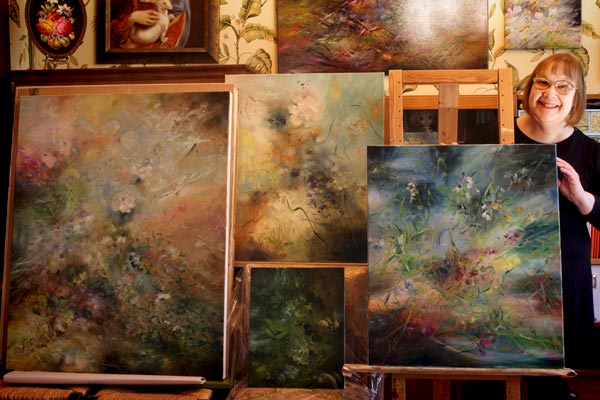
But if my dead parents heard about this life, they would claim that it’s not ordinary at all!
Visiting Exhibitions
Last week, I went to the big exhibition presenting the work of Albert Edelfelt at the Ateneum art museum in Helsinki. When I sat down to listen to seminar presentations about his work, my parents came to mind. They would have liked to see the exhibition. And they would be amazed to learn that I went to see it because of my work. I wanted to examine Edelfelt’s brush strokes in real life because I’m currently painting works for the show called “Taiteilijat Edelfeltin tunnelmissa – Artists in the Mood of Edelfelt.”
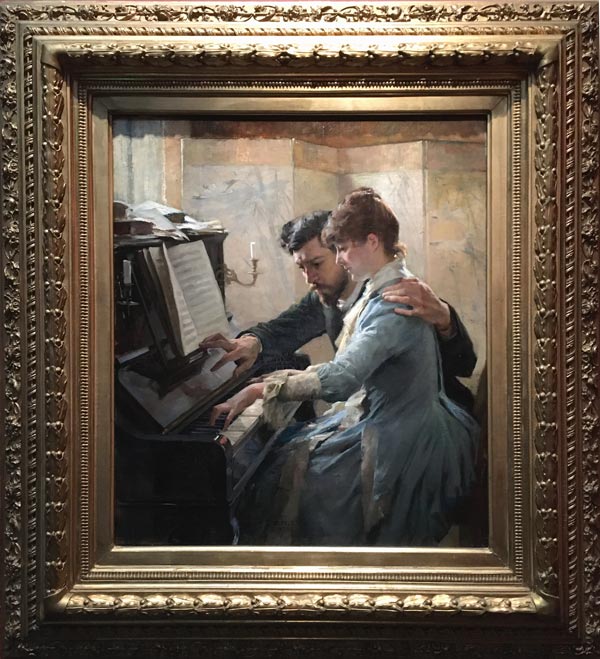
It’s important to me to see what other artists have created. It makes me feel connected, discover new techniques, and it inspires me to do things a bit differently than what I see. I often ask: what’s lacking if this would be my work? In the painting above, I would have added abstract elements on the top, depicting music.
Pressures of Everyday Life
All work becomes mundane when you do it systematically and goal-oriented. There will be pressures that you didn’t even think about in your dreams. You have to remember to order the supplies in time, plan the sizes of the paintings, the subjects, and the schedule for each one, pick up dog hair from unfinished works at the time of shedding, clean the paint tubes, wash the brushes carefully, wonder if anyone likes the painting and worry if it’s finished or not. Making a series of paintings is always a financial investment.
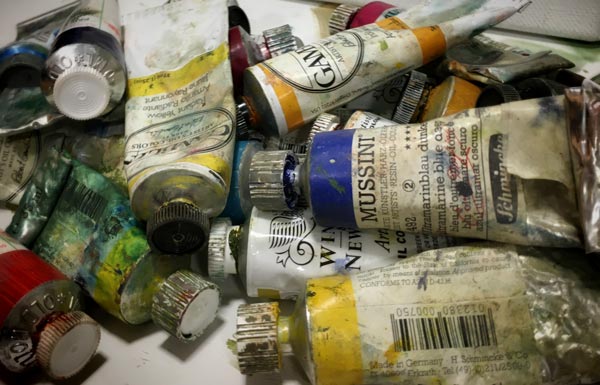
But when I am washing the floor from oil paint stains or doing something else mundane related to painting, I want to remember how wonderful it is to work on this project.
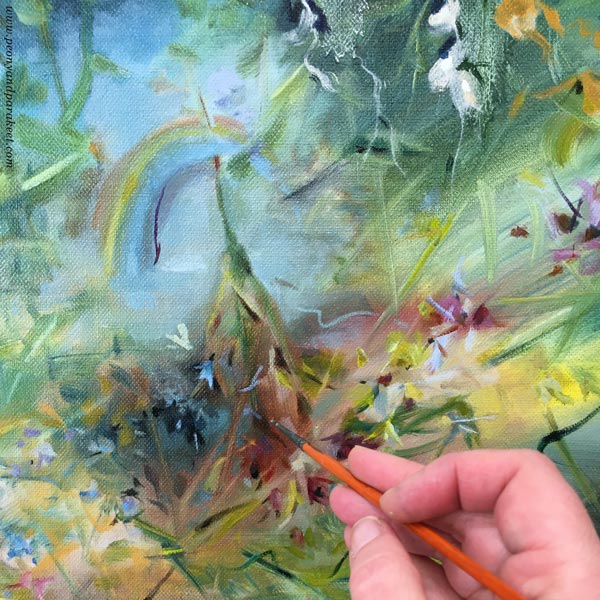
After all, I love art history, and the very thought that my paintings go to the place where Albert Edelfelt spent his summers is inspiring.
Everyday Ponderings
Lately, I’ve been thinking about why I always deal with longing in my paintings. I easily lean into nostalgia. Albert Edelfelt depicted people and landscapes realistically, but he also sometimes dealt with history and went back in time.
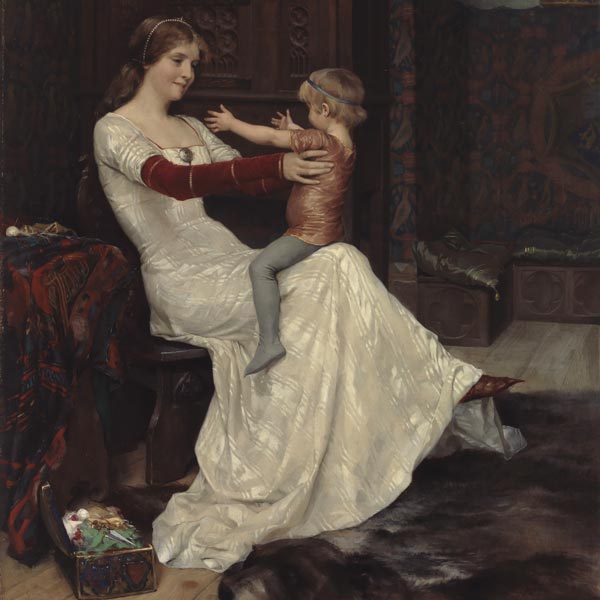
However, the difference between me and Albert is that he was interested in how things could have really happened and did detailed background research. I’m more inspired by how things could have gone differently.
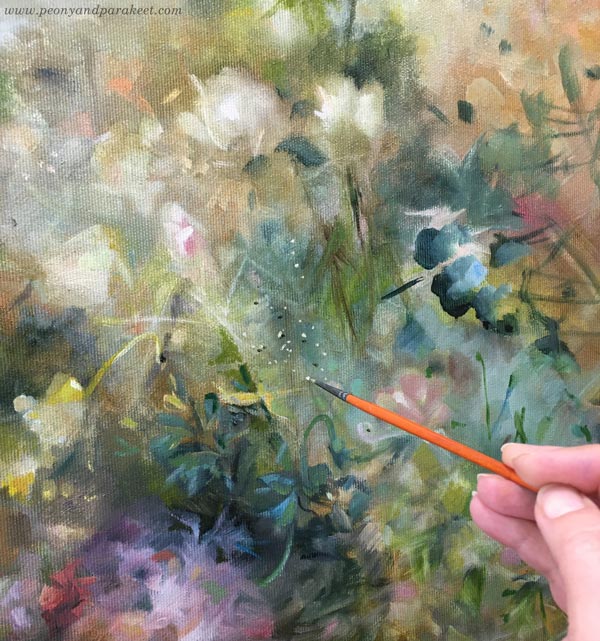
I don’t know how my parents thought my life would turn out. Many times it has gone differently than I would have guessed myself! Sometimes for good, sometimes for bad. Life as an artist is very unpredictable. Just when you think you have to stop, a new project comes up.
Everyday Task – Planning for the Future
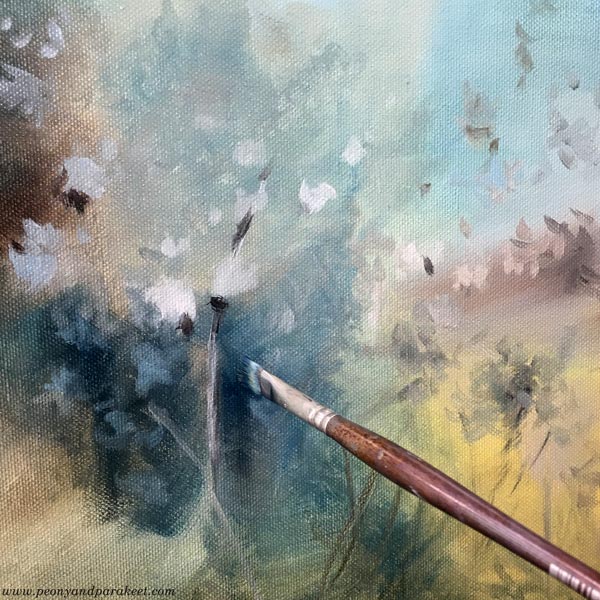
One of the hardest things in being an artist is to always move forward and think bigger. When this year’s plans are set, the next year begins to worry.
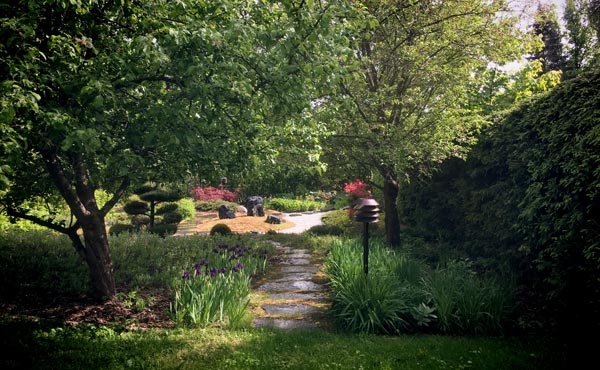
Artists are always in progress and very similar to gardeners. When a person says: “My garden is now finished,” you know that it’s the beginner speaking. Gardens are never finished!
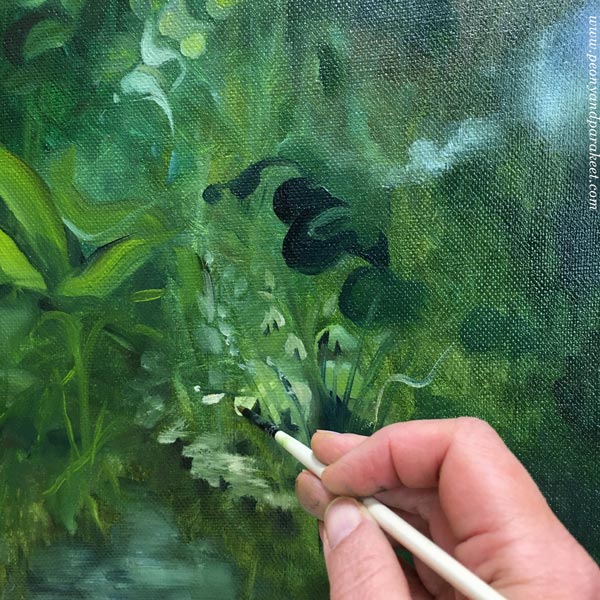
It’s the same thing with art – you will find yourself, but then you will change and have a new you to find. I try to get the most out of this everyday life because it too is about to change for sure.
Art and Sacrifice – Must an Artist Drop Other Interests?
This week, I respond to a question about creative focus: when we want to move forward, should we focus on doing one thing and abandon other creative activities, like crafting?
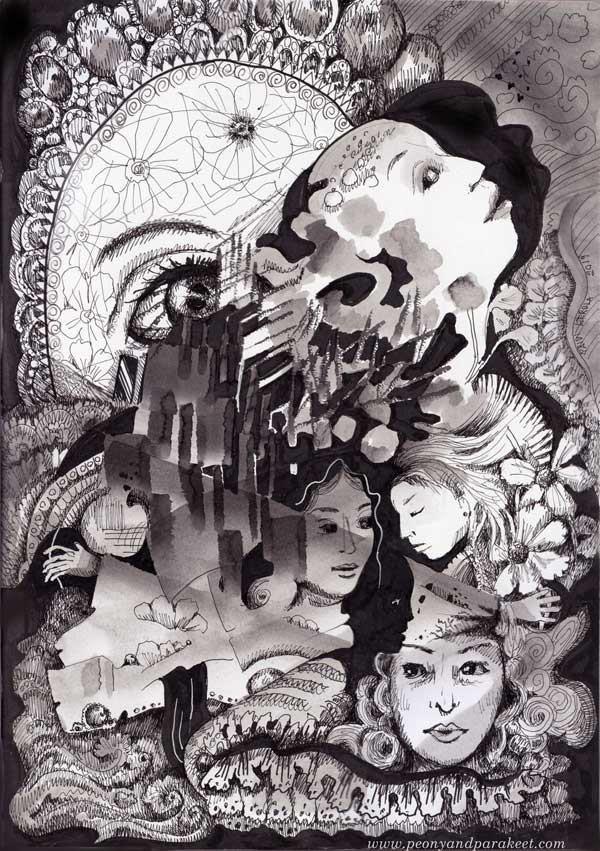
I got the idea for this blog post from an interesting discussion that is running in my community Bloom and Fly.
The discussion started when a member wrote:
“I find that I have an interest in, perhaps, too many creative pursuits. I enjoy sketching, making journals, watercolors, acrylics, crafting, etc. I have observed that artists with a specific focus and dedication seem to be more successful and just plain good at what they do.
Of course, if one focuses on one ability, the hope is a gain in creative skills. Practice for purpose. So, should we know that in order to be very good at something, we must sacrifice other interests? Any thoughts?
I find that I have an interest in, perhaps, too many creative pursuits. I enjoy sketching, making journals, watercolors, acrylics, crafting, etc. I have observed that artists with a specific focus and dedication seem to be more successful and just plain good at what they do. Of course, if one focuses on one ability, the hope is a gain in creative skills. Practice for purpose. So, should we know that in order to be very good at something, we must sacrifice other interests? Any thoughts?“
Here’s my answer!
Sacrificing a Hobby? What’s Your Priority?
When you want to move forward, the essential question about every activity is: “Is this activity for relaxation or for moving forward” so, “Is this hobby or work?”
Having many hobbies is a good thing. I am a professional artist, and I love my many hobbies. For example, I quilt, scrapbook, make cards, spin yarn, knit, and cross stitch. I don’t do everything every week, but I do these regularly in my spare time, mainly in the late evenings and weekends. If I learn new things in my hobbies, it’s nice, but it’s not why I do them. I do them for relaxation, to keep the balance in life, and to stay healthy.
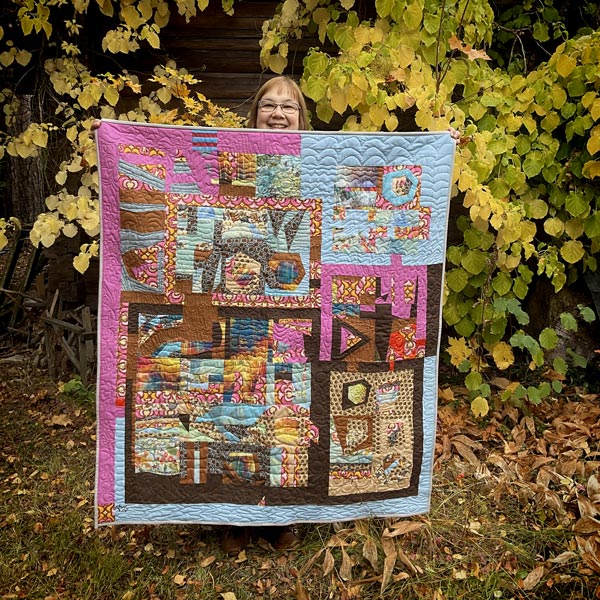
My official Instagram account is @peonyandparakeet, and there, I only share art-related stuff.
Separating your hobbies from your work is essential when you want to see your artistry more clearer.
I also have two beagles that need quite a lot of exercise and lots of house plants that need care. Like my other hobbies, they have never been things that I would sacrifice to become a better artist. I would find it very difficult to lead a happy life focused on art-making only.
But when you want to move forward in visual art, you need to redefine creativity and art.
For many people, a simple quilt is a work of art, a sign of creativity. I get that. But when you want to move forward in art, you need to raise the bar and stop treating every activity as if it would require creativity.
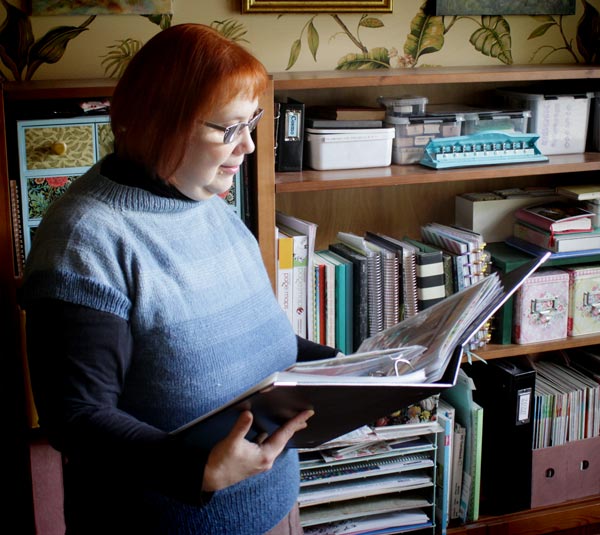
For example, if you don’t want to become a professional scrapbooker, decide that scrapbooking is not a creative activity for you. Yes, you learn self-expression and design from it, but treat it as a side bonus and define the meaning of the hobby differently. For example, I scrapbook because I want to get reminded of the good things that happen in real life – that everything is not about my imagination, but real life matters too. I want to take photos and get an outside view of my life. My paper crafting happens in a different space than art-making and with a different set of tools.
I don’t publish my paper crafting projects alongside my art. Sharing my art is work, and paper crafting is a hobby that’s reserved just for me. When I shop for crafting products, I am a consumer who enjoys buying pretty stuff. When I shop for art supplies, it’s much more serious. I check the pigments and the other quality factors and don’t feel like a shopper at all.
The results of my hobbies are not brilliant, but I reserve my critical eye for my art. If I someday do not enjoy the hobby, I just stop and do something else. That’s ok because it’s not my work.
Where Does Your Best Energy Go?
I save my best energy for creating art. It’s my priority and my work.
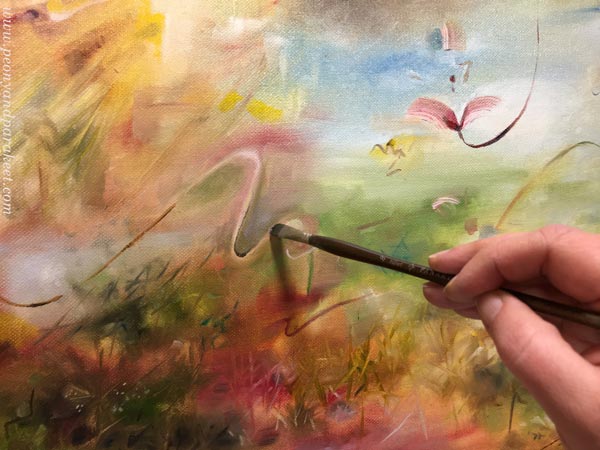
Many days are difficult, but that’s ok. I don’t expect to enjoy every moment. Even if I sometimes fiercely hate what I do, I will continue because, in the long run, it enables things that I want to accomplish in life.
Of course, like in every job, changes are needed if every single day is agony. But in general, I don’t expect things to go easily and effortlessly. I show up every weekday and create productions, not just single projects. Productions are, for example, a series of paintings that I will be exhibiting or a course that I will be launching. I try to think about my work as a series of things, not just single things that I throw to the world. I commit from three months to one year and don’t expect results immediately.
Series is always a big risk. Many classes have not sold as I expected them to, but some have been surprisingly successful. The same has happened with paintings. But the more I think of my work as a continuum or a curated collection, the more potential impact there is.
That’s also why I want to encourage you to make art journals, make a series of drawings to fill boxes of joy, and even take classes to commit to several projects.
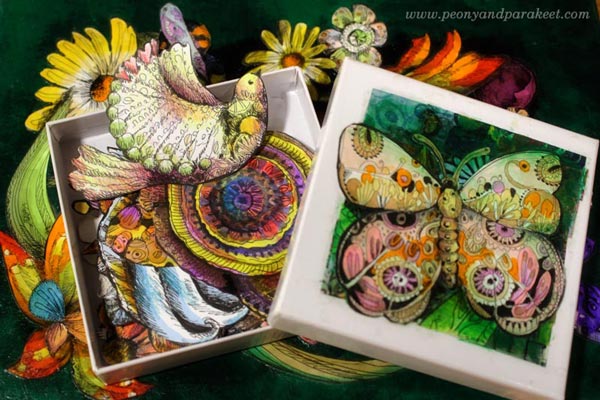
Sacrificing Techniques: Drawing or Painting, Watercolors or Acrylics?
When you want to move forward in art, the most important question is not about the technique. It’s more important to consider what things you want to offer the world. If you think about this blog, would you really want me to focus on one technique, one theme, or one subject? And still, I have a clear focus that defines my offerings: I want people to get connected with their imagination.
Thus, when I fill my journals, it doesn’t make me feel less artist than if I make big oil paintings. My intention is the same – to inspire you to reach that inner child and use your imagination. Journal pages get published in my blog or classes and encourage you to create and imagine, and when someone buys a painting, it takes his or her mind from the wall to a different world.
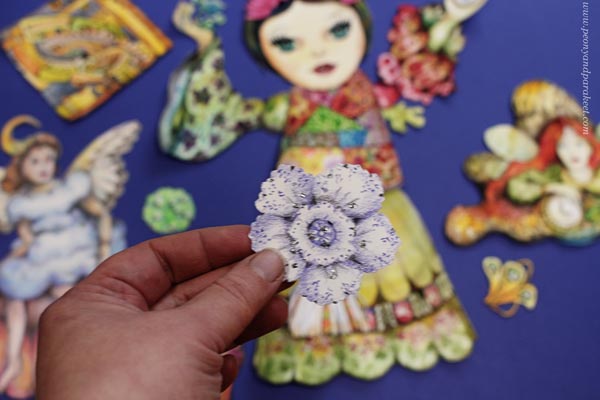
In the work-oriented mindset, you don’t just create for yourself but build a path to serve others. This path can, of course, begin from your own enjoyment, but the longer you want to go, the more it will also involve others.
When you see artists focusing on what they do, remember that they are mindful of how they serve you. Their life can include all kinds of things and activities; they just don’t show that to you. You don’t need to sacrifice your other hobbies; you only need to stop thinking of art as something that you do only for yourself.
This, however, doesn’t mean that you would do art only for the sake of pleasing others. When you are at the beginning of an artist’s journey, you are not conscious of how you can serve people the best way yet. You need to create more art, grow your skills, listen to yourself, and regularly show up to the world. I have found my path by updating this blog, which is now over 10 years old. So I thank you for helping me find my mission as an artist!
“Great, But I Don’t Want Art to Be Work for Me!”
Of course, we can have goals in our hobbies too, and many times the development begins as a hobby. But isn’t it so that when we set goals, they include secret dreams? Being aware of these hidden thoughts and facing how much work it will require is a part of the artist’s journey. And yes, some sacrifice is then needed.
If I think about myself, becoming an artist has required more passion and work than I thought. For example, getting over rejections has been hard but necessary. When everyone said “no,” it was difficult to see the potential “yes” in my work.
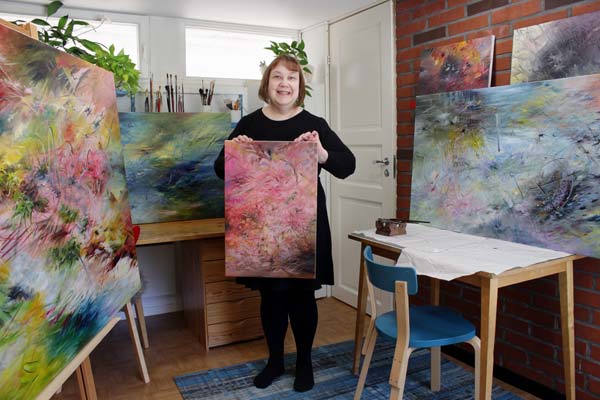
But life is short, and this is what I have ever wanted to accomplish in this life. And now, I even see a new horizon and want to accomplish more. Again, it feels overwhelming, but I know that if I treat it as work – as my priority, I will have a chance. I will write more about that in the near future!
Art and Sacrifice – What Do You Hope to Accomplish?
This is my counter question to the original one. What does being successful in art mean to you?
I also like this question: “How does success appear in your environment?” It’s like a mini question that leads to the big one. For example, imagine how your home looks when you have accomplished what you hope to do. How have you organized the supplies? What’s on your walls? What is the overall style and atmosphere? Even – where do you live then?
Any thoughts? Please leave a comment!
Little Assistants – How Pets Help with Art Making
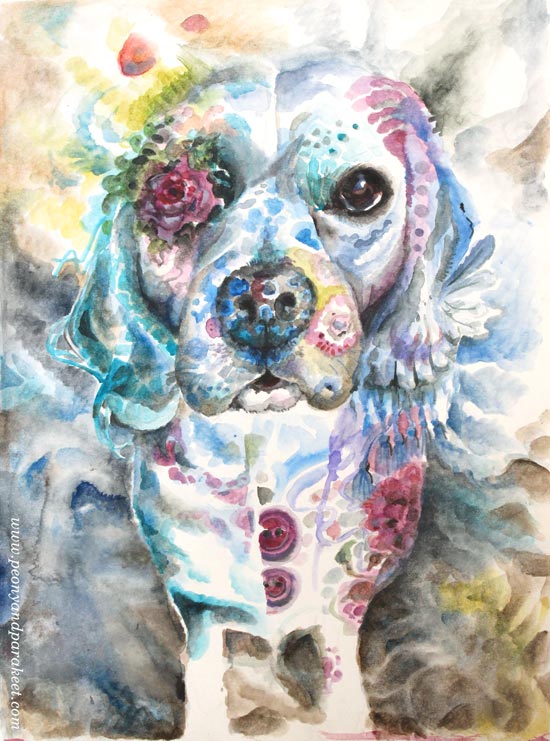
I work at home with two dogs and four birds. My husband leaves early in the morning and then there are only us, the gang of seven. One of my little assistants is a beagle called Stella, a very cute little angel to every human but I think she would describe herself as a hungry hunter and would order a very different portrait than this one!
Gathering Inspiration
First, I take the dogs out for a walk. I solve most of my work-related problems and make plans in this private morning meeting, happening inside my head. In the afternoon, there’s another walk, but that’s not as productive as the one in the morning.
I always carry a phone with me so that I can take photos if I happen to see something inspirational and artistic. As a result, I have a lot of pictures that are not so great or meaningful to memory keeping and such, but that look abstract art to me.
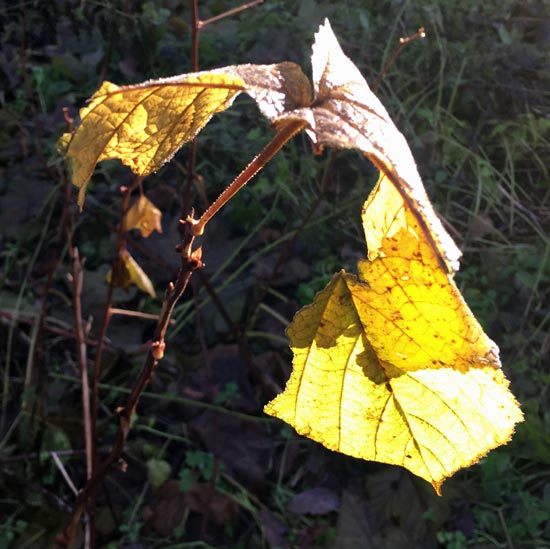
This winter we have got quite a many snow storms. In February, it had snowed a lot during the day, so before we left our front yard, I was already taking photos of this mad whiteness that we were trying to overcome.
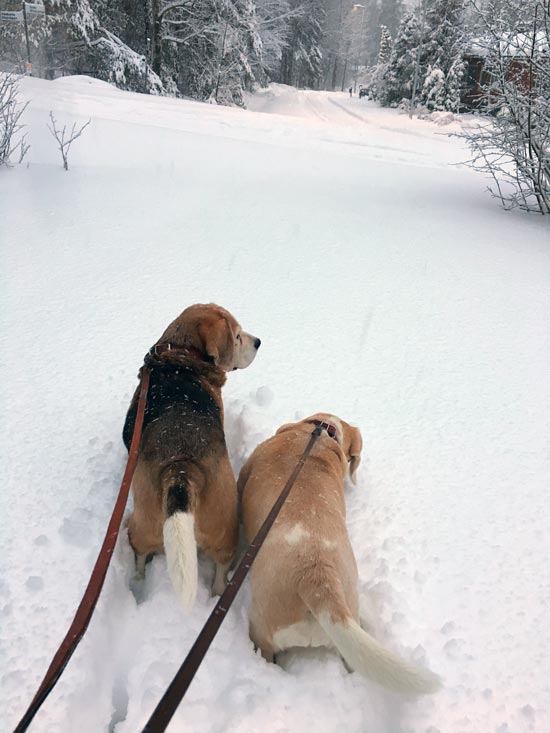
We had been wading for some time when I realized that I had lost my keys in the snow while taking photos. After a lot of sweat, and stepping back and forth, I finally found the keys in the middle of “the road.” During a year, there are many days in Finland where everyone else than dog owners have their meetings indoors.
Taking Healthy Breaks
On a workday, my dogs hang around quite a lot. They have learned that if I set something on the floor, it’s not for them to lay down on.
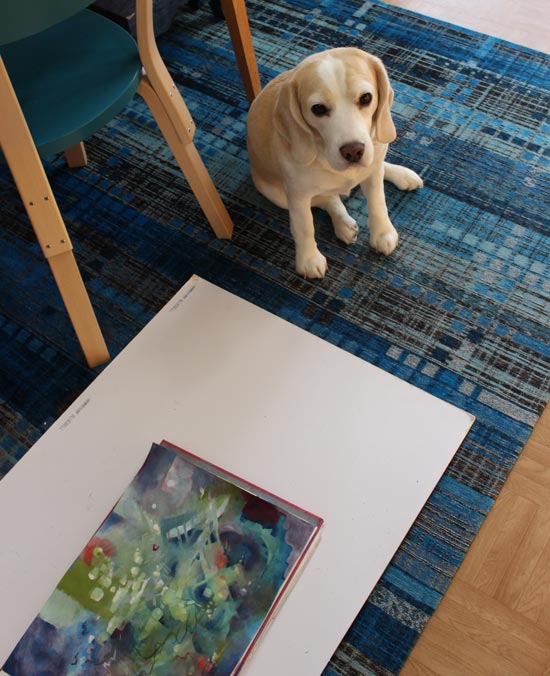
They try to be patient when waiting for daily treats but maybe see their role as interrupters who force me to have short breaks now and then. Cosmo, the old one, is the leader who decides when to stop my work, and Stella quickly joins him.
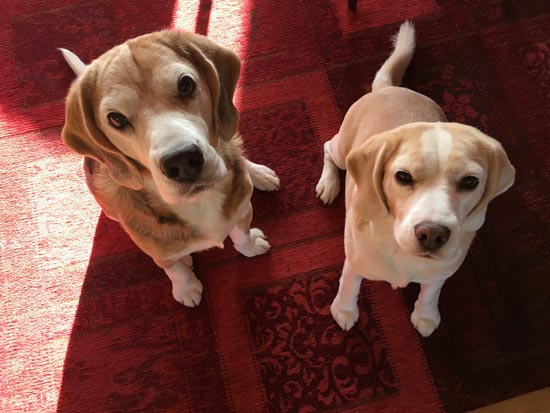
These breaks don’t always seem so healthy and fun to me. I am often in a very concentrated mode and find a soft touch of a nose just annoying. But who could resist these faces?
Getting Genuine Encouragement
The birds – four budgies called Henrietta, Citronelle, Dynamite, and Bonneville – see my work differently. They want to join me and encourage me when I am at my best. It means that every time I record videos, and they sense the excitement in my voice, they start chirping: “Go on, you are doing great! Oh Paivi, you are so inspiring!”
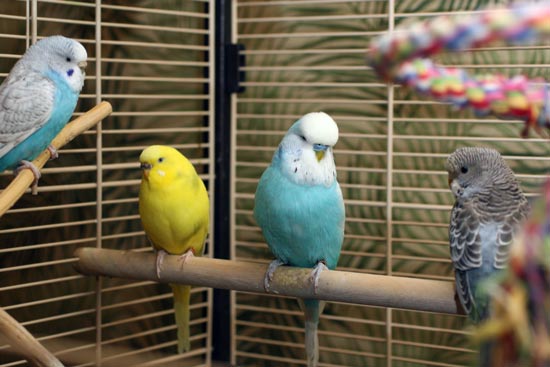
Hearing the birds is a contradictory thing. My birds don’t lie so if I don’t hear any sounds when I am speaking, I know that my enthusiasm doesn’t show and I have to fix that. But despite the walls, the mic picks up the high-note sounds easily. So I have to stop recording, go to the library room to ask them to be quiet. Sometimes nothing else helps than darkening the room and adding a cover on their cage. It often feels cruel, especially after seeing them happy and excited first. So many of my videos have bird sounds in the background, and I hope that you forgive us!

Having Pets as Models
Cosmo and Stella are very proud of their modeling skills, and they think that the reward they need for every minute is very moderate too. However, it’s often cheaper for me to take a photo and use that as a reference.

Unfortunate for them, but I don’t often paint dogs. But this month, when the monthly theme of Bloom and Fly is stretching the imagination and adding surreal elements to art, I wanted to express how cute Stella is in my eyes.
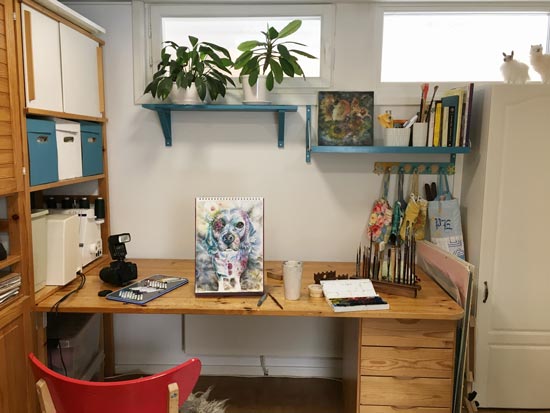
Learning Leadership Skills
My position as the leader of the pack has strengthened during the past years. We all wait eagerly for my husband in the afternoons but I am often the one my pets turn with their needs. My husband loves them as much as I do, and it hasn’t always been this way. But the time spent with them matters, and it gives me the sense of satisfaction when I don’t have to leave my pets alone.
This year, leading an online community has been new to me. In fact, when I left my day job in 2014, I thought that I would be just making self-study classes and taking care of the pets! There’s a false sense of independence built in the art making because most of the creating happen alone. But after running my first workshop, I realized that I can help more when there’s more interaction.
With the community, it has dawned on me that the role of a leader doesn’t mean that I have to know it all. We are all learning from each other. It’s a liberating thought, and it doesn’t only empower the leader, but the members as well.
We often have intentions to create a certain kind of art or share our art but postpone it because we feel that we need to figure it out by ourselves first. Some of the things that I have postponed are diving deeper into watercolor painting and develop more ways to use art for self-exploration.
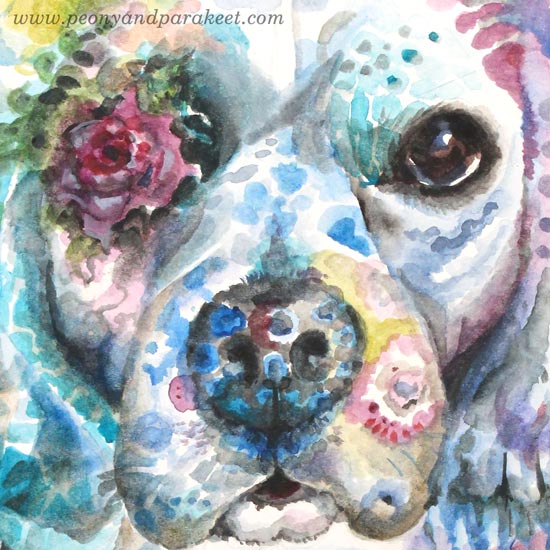
But the truth is that when you have the support, changes start to happen. You get structure and kindness that gives you courage. There’s no need to struggle alone or wait until you are ready. The life is not so long after all.
Bloom and Fly – Don’t wait until you are more skillful, join the community now!
Minimalism in Creating – Making the Most of What You Have
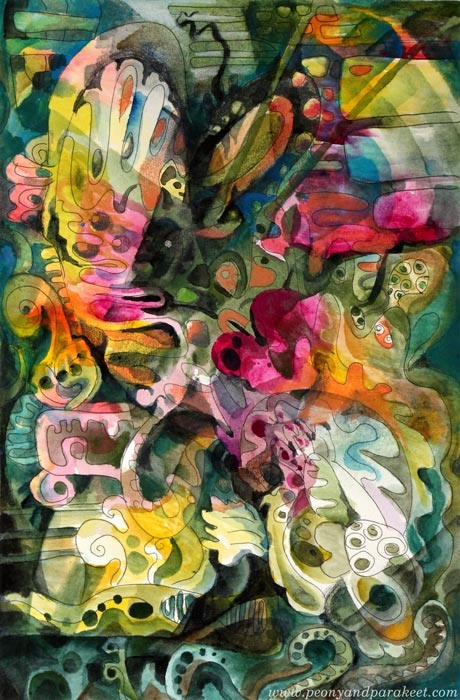
Here’s my latest little study in watercolor, called “Ikebana.” I finished it today, but for a long time, it was just a piece of watercolor paper with random doodles and colored spots. I had started the piece in December 2016 when running a local art class. I had just painted mindlessly while discussing with the students and then left the piece unfinished.
Choosing Not to Toss Away
When I was holding the unfinished, ugly painting, I thought of my choices. I could toss the paper away and forget the thing. Or I could treat it as a treasure and make the most of it, despite the controlling straight lines that went through the page and other uninspiring details. To me, choosing to continue the painting, is usually always the better choice. Making the most what I have calms me down, gives me a sense of purpose, and positively challenges me. I don’t consider it so much as a choice of saving money or space but getting a peace of mind.
I have also noticed that when I work on with the old pieces, I find new ways to make them more expressive. That in turn, helps me to develop better classes and help my students. This time, I was inspired by April’s theme of Bloom and Fly – surreal art!
Getting back to old doodles also reminds me that even if I can’t make all the details work together, art is never fully perfect. Often the minor “mistakes” add personality and interesting tension to the piece.
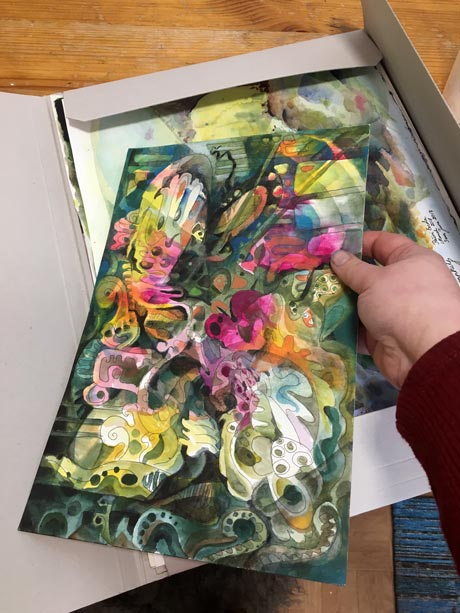
I also like to store the finished pieces organized in folders.
Using Up Old Art Supplies
One of my favorite things is to organize art supplies once in a while. I try to find the best places for them so that they get used up. I find it much more pleasurable to buy new supplies when there’s the actual need. It’s also nice when I have had time to think what to purchase next.
So when I noticed that some pans of my White Nights watercolor set are getting empty, I decided to experiment and fill some with paint from the old tubes. I found an old gouache tube by Schminke, the pink that I totally love but had forgotten, and I hope it will keep on wetting well even after the pan is fully dried.

One of the pans that I made, the muddy green, is a color mix. It’s a color that I usually use for watercolor paintings to give brighter colors more power.
My Meditation – Cleaning Brushes
The longer I have created art, the more I have put a focus on my brushes. I used to buy them carelessly and toss them away once they didn’t seem to work anymore. But nowadays, I like to appreciate what I have and take time to clean the brushes carefully after each painting session.
The cleaner that I currently use is The Masters Brush Cleaner, recommended to me by my artist friend Eeva Nikunen. I have saved many old brushes by cleaning them properly with this cleaner, and I couldn’t even think of cleaning oil paint from the brushes with anything else.
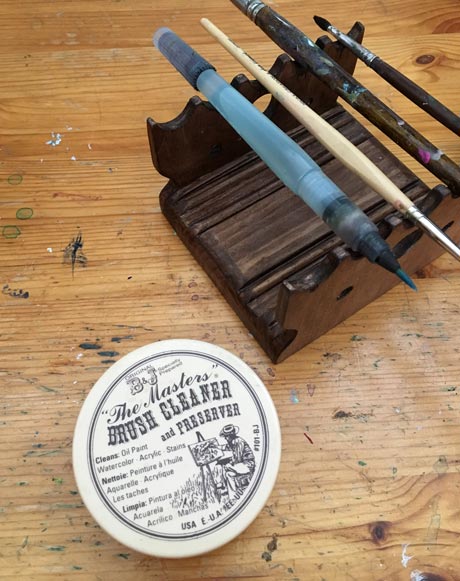
This cleaner is a solid soap. You dip the brush in water and then rub the soap with the brush. Formerly, I only washed the brushes with warm water after watercolor painting. Now I use the cleaner for watercolor brushes too, and it’s lovely to begin a new painting session when my brushes are like new!
No Need for Inventing New Ideas
To me, looking old stuff with fresh eyes is one of the best things in art, and it applies to ideas as well. See “From Innovation to Experience” from 2014 and Origami from 2016-2018!

Is This Too Much Minimalism?
I was hesitant to write this blog post because I don’t want to take the joy out of buying new stuff and starting new art. I also enjoy that! But often the best cure for procrastination is to stop thinking what you don’t have and start using your creativity to make the most of what you already have. Bonding with the old supplies and ideas can give a sense of independence and freedom too.
“It’s not who you are that holds you back, it’s who you think you’re not.” – Artist Jean-Michel Basquiat
I heard this quote from one of the members of Bloom and Fly, and it feels appropriate here too!
Bloom and Fly – Get new inspiration and perspective to your art!
>> Sign up here!
